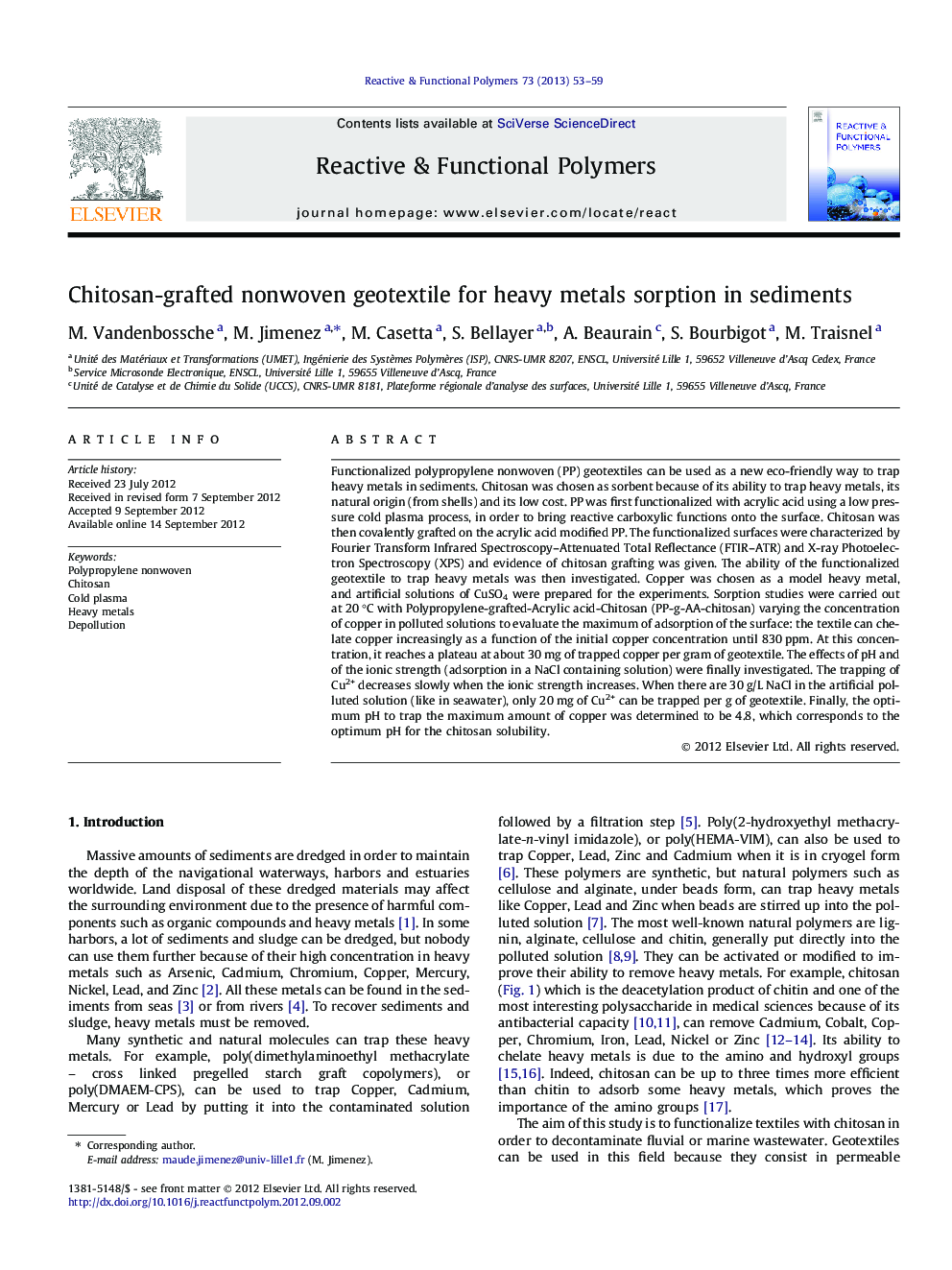| کد مقاله | کد نشریه | سال انتشار | مقاله انگلیسی | نسخه تمام متن |
|---|---|---|---|---|
| 5210263 | 1382883 | 2013 | 7 صفحه PDF | دانلود رایگان |
عنوان انگلیسی مقاله ISI
Chitosan-grafted nonwoven geotextile for heavy metals sorption in sediments
دانلود مقاله + سفارش ترجمه
دانلود مقاله ISI انگلیسی
رایگان برای ایرانیان
کلمات کلیدی
موضوعات مرتبط
مهندسی و علوم پایه
شیمی
شیمی آلی
پیش نمایش صفحه اول مقاله

چکیده انگلیسی
Functionalized polypropylene nonwoven (PP) geotextiles can be used as a new eco-friendly way to trap heavy metals in sediments. Chitosan was chosen as sorbent because of its ability to trap heavy metals, its natural origin (from shells) and its low cost. PP was first functionalized with acrylic acid using a low pressure cold plasma process, in order to bring reactive carboxylic functions onto the surface. Chitosan was then covalently grafted on the acrylic acid modified PP. The functionalized surfaces were characterized by Fourier Transform Infrared Spectroscopy-Attenuated Total Reflectance (FTIR-ATR) and X-ray Photoelectron Spectroscopy (XPS) and evidence of chitosan grafting was given. The ability of the functionalized geotextile to trap heavy metals was then investigated. Copper was chosen as a model heavy metal, and artificial solutions of CuSO4 were prepared for the experiments. Sorption studies were carried out at 20 °C with Polypropylene-grafted-Acrylic acid-Chitosan (PP-g-AA-chitosan) varying the concentration of copper in polluted solutions to evaluate the maximum of adsorption of the surface: the textile can chelate copper increasingly as a function of the initial copper concentration until 830 ppm. At this concentration, it reaches a plateau at about 30 mg of trapped copper per gram of geotextile. The effects of pH and of the ionic strength (adsorption in a NaCl containing solution) were finally investigated. The trapping of Cu2+ decreases slowly when the ionic strength increases. When there are 30 g/L NaCl in the artificial polluted solution (like in seawater), only 20 mg of Cu2+ can be trapped per g of geotextile. Finally, the optimum pH to trap the maximum amount of copper was determined to be 4.8, which corresponds to the optimum pH for the chitosan solubility.
ناشر
Database: Elsevier - ScienceDirect (ساینس دایرکت)
Journal: Reactive and Functional Polymers - Volume 73, Issue 1, January 2013, Pages 53-59
Journal: Reactive and Functional Polymers - Volume 73, Issue 1, January 2013, Pages 53-59
نویسندگان
M. Vandenbossche, M. Jimenez, M. Casetta, S. Bellayer, A. Beaurain, S. Bourbigot, M. Traisnel,